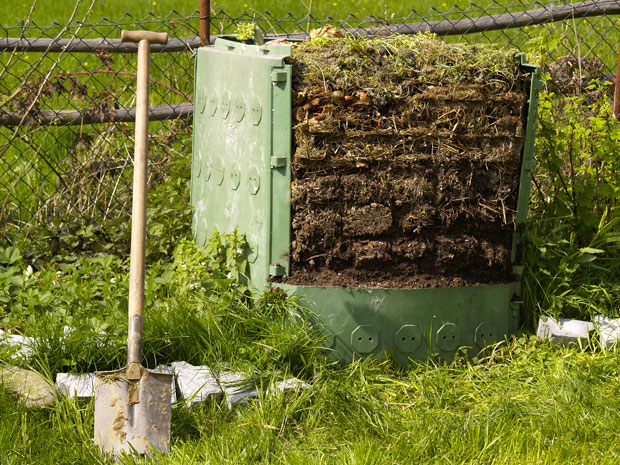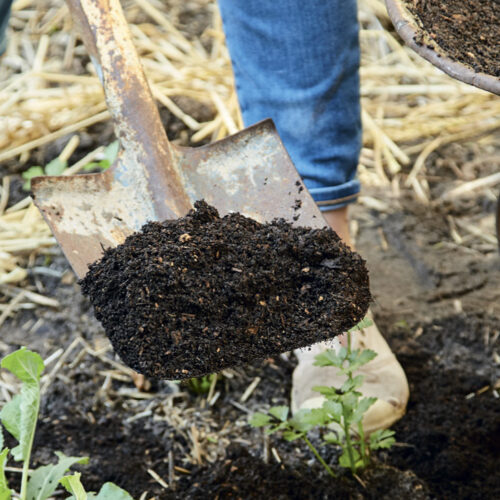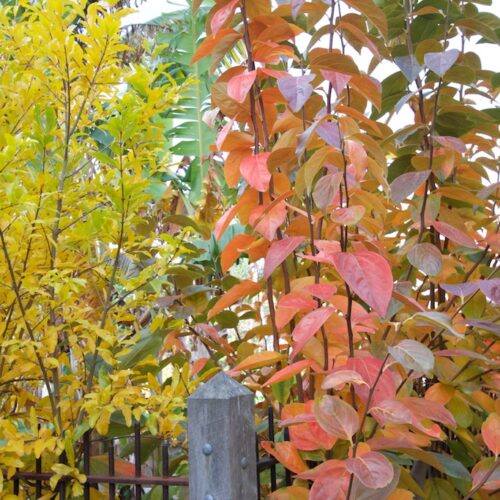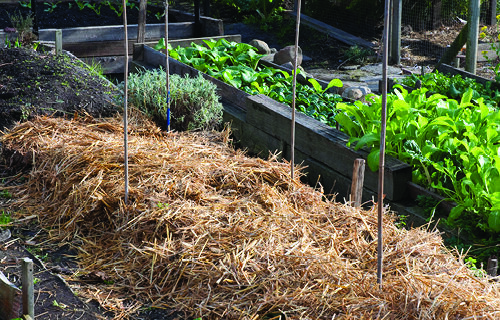Make a cheap compost bin
2013-06-18T02:12:51+10:00
JUSTIN RUSSELL explains how to make a compost heap from cheap, locally sourced materials.
I’ve got big plans for the garden this winter. After a few consecutive years of heavy rain, I’m redesigning my acre and a half to cope better with extreme weather, which in our part of the world (SE Qld), seems to equate to whopping droughts, followed by annoyingly repetitive floods.
My compost bins are high on the priority list. At the moment I’ve got three bins, each a cubic metre in volume, located on the southern side of an old shed. In winter the bins are completely shaded, which coupled with the fact that the shed has no gutters, means the compost can get excessively wet in a gloomy cold season.
What I’d like to do is move my compost bays to an airier, sunnier spot that isn’t directly below the drip line of a shed. I made my current bays very cheaply from recycled timber pallets, stood on their sides and supported by star pickets. The plan for my new heap is slightly different. I’ll make the bays a bit larger to produce a greater volume of compost, and I’m planning to use locally produced straw bales stacked about three bales high to form the sides.
Again, this is a cheap way to make a compost bin, but it has an advantage over more permanent materials. Straw bales will last for about two years in the open before they really start to decompose, at which point I’ll cut the baling twine holding them together, and use the semi-rotted straw as feeder material for a new heap.
You might want to try something similar at your place, but if space is tight, you’d be better off with a compost tumbler, or at least a couple of plastic bins. I recommend having two bins on the go for a simple reason. Once the first is full, you can give it time to completely decompose while the second bin is filling. Once it’s full, the mature compost should be ready to use, and the bin can be emptied, starting the process again.
Whichever method you choose, composting is an essential component of organic gardening, and the finished product is known as “black gold” for very good reason. It’s magic for your plants.






